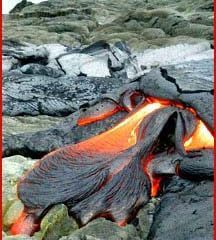Latest News

Clue to prion formation found, offers step toward treating puzzling diseases
Prions—their existence is intriguing and their links to disease are unsettling. These unconventional infectious agents are involved in mad cow disease and other fatal brain illnesses in humans and animals, rattling prior assumptions about the spread of infections.
Dartmouth Medical School biochemists studying the mysteries of these prion particles have discovered a novel step in their formation. Their results, reported in a recent issue of Biochemistry could help provide a new approach for

Greenhouse gas might green up the desert
Weizmann Institute study suggests that rising carbon dioxide levels might cause forests to spread into dry environments
Missing: around 7 billion tons of carbon dioxide (CO2), the main greenhouse gas charged with global warming. Every year, industry releases about 22 billion tons of carbon dioxide into the atmosphere. And every year, when scientists measure the rise of carbon dioxide in the atmosphere, it doesn’t add up – about half goes missing. Figuring in the amount that could be s

A fiery debate about volcanoes
In a Perspective in the May 9 issue of Science, geochemist Don DePaolo and geodynamicist Michael Manga defend a fundamental assumption of Earth science, the mantle plume model of hotspots, against an outbreak of seismic skepticism.
DePaolo and Manga are members of Lawrence Berkeley National Laboratory’s Earth Sciences Division and the University of California at Berkeley’s Department of Earth and Planetary Science. DePaolo studies the chemical signatures of geological structures l

Controlling cell adhesion: Researchers report first evidence of ’catch bonds’
Regulating cells under stress
An article published this week in the journal Nature provides the first experimental evidence for an unusual molecular bonding mechanism that could explain how certain cells adhere to surfaces such as blood vessel walls under conditions of mechanical stress.
Known as “catch bonds,” the adhesion mechanism displays surprising behavior, prolonging rather than shortening the lifetimes of bonds between specific molecules as increasing force is applied. Pr

Research suggests a new method to protect groundwater quality
Farmers can prioritize areas within fields to reduce nitrate contamination
Fine-tuning fertilizer and irrigation management requires farmers to carefully balance optimizing yield and protecting groundwater quality. Some states even require farmers to use crop production practices to minimize nitrate leaching to groundwater in environmentally sensitive areas.
One such practice is using a nitrification inhibitor when applying nitrogen fertilizer, which helps protect nitrogen f

Retinal prosthesis trial completes first phase of testing
One-year results presented at annual ophthalmology meeting
Researchers from the Keck School of Medicine of the University of Southern California, its Doheny Retina Institute and Second Sight, LLC, are reporting on the initial results of their groundbreaking, FDA-approved feasibility trial of an intraocular retinal prosthesis that appears to be able to restore some degree of sight to the blind.
“We have successfully completed enrollment and implantation of three patients in t











